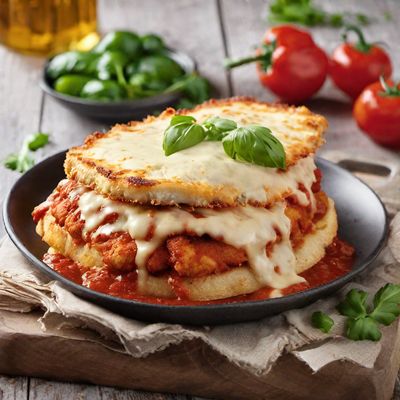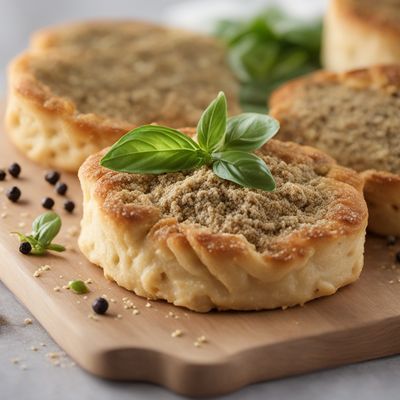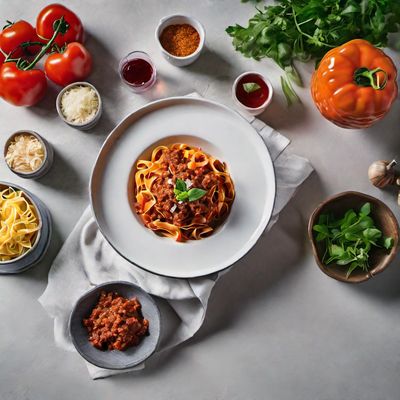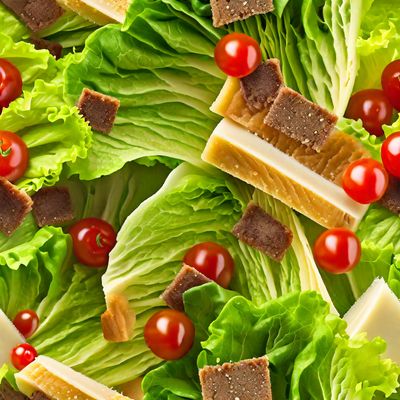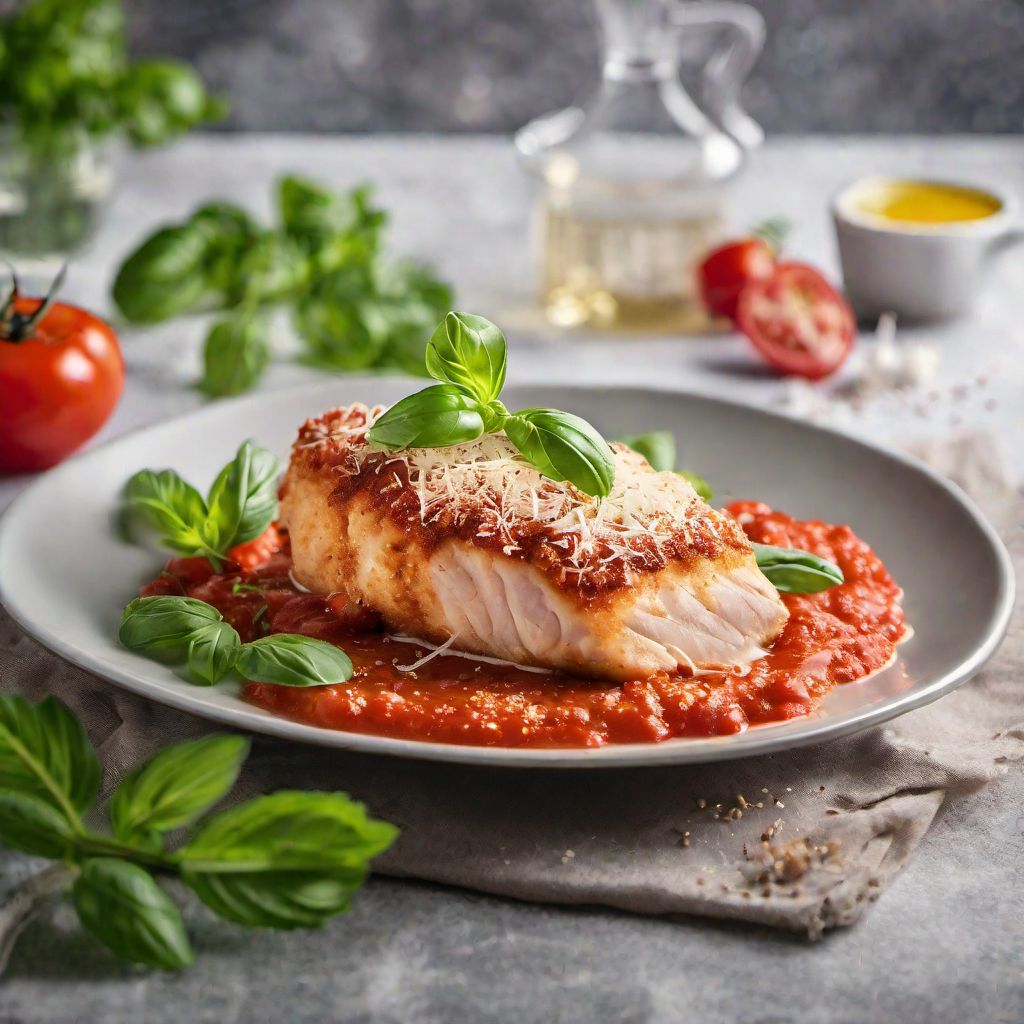
Recipe
Molecular Chicken Parmigiana
The Gastronomic Transformation of Chicken Parmigiana
4.8 out of 5
In the realm of molecular gastronomy, we embark on a culinary adventure to reinvent the classic Italian-American dish, Chicken Parmigiana. By utilizing innovative techniques and scientific principles, we elevate this beloved comfort food to new heights, creating a visually stunning and delectable masterpiece.
Metadata
Preparation time
30 minutes
Cooking time
20 minutes
Total time
50 minutes
Yields
4 servings
Preparation difficulty
Medium
Suitable for
Vegetarian (with modifications), Gluten-free (with modifications), Low-carb, High-protein, Molecular gastronomy enthusiasts
Allergens
Dairy (mozzarella and Parmesan cheese), Eggs, Gluten (breadcrumbs)
Not suitable for
Vegan, Dairy-free, Paleo, Keto, Nut-free
Ingredients
In this molecular adaptation, we deconstruct the traditional Chicken Parmigiana, transforming it into a visually captivating dish with unique textures and flavors. By employing techniques like spherification, emulsification, and foams, we create a dish that surprises and delights the senses. We alse have the original recipe for Chicken Parmigiana, so you can check it out.
-
2 chicken breasts (200g / 7oz) 2 chicken breasts (200g / 7oz)
-
50g (1.8oz) mozzarella cheese 50g (1.8oz) mozzarella cheese
-
50g (1.8oz) Parmesan cheese 50g (1.8oz) Parmesan cheese
-
100g (3.5oz) breadcrumbs 100g (3.5oz) breadcrumbs
-
2 eggs 2 eggs
-
50g (1.8oz) all-purpose flour 50g (1.8oz) all-purpose flour
-
200g (7oz) tomato sauce 200g (7oz) tomato sauce
-
10g (0.35oz) basil leaves 10g (0.35oz) basil leaves
-
5g (0.18oz) parsley leaves 5g (0.18oz) parsley leaves
-
2g (0.07oz) agar-agar 2g (0.07oz) agar-agar
-
100ml (3.4fl oz) olive oil 100ml (3.4fl oz) olive oil
-
Salt and pepper to taste Salt and pepper to taste
Nutrition
- Calories: 450 kcal / 1880 KJ
- Fat: 25g (12g saturated)
- Carbohydrates: 20g (3g sugars)
- Protein: 35g
- Fiber: 2g
- Salt: 1.5g
Preparation
-
1.Preheat the oven to 180°C (350°F).
-
2.Flatten the chicken breasts using a meat mallet until they are about 1cm (0.4in) thick.
-
3.In a bowl, whisk the eggs. In separate bowls, place the flour and breadcrumbs.
-
4.Dip each chicken breast into the flour, then the egg, and finally coat with breadcrumbs.
-
5.Heat olive oil in a pan over medium heat. Fry the breaded chicken breasts until golden brown on both sides.
-
6.Transfer the chicken breasts to a baking dish and top with tomato sauce, mozzarella, and Parmesan cheese.
-
7.Bake in the preheated oven for 10 minutes or until the cheese is melted and bubbly.
-
8.Meanwhile, prepare the basil and parsley foam. Blend the basil, parsley, and agar-agar with 100ml (3.4fl oz) of water. Bring the mixture to a boil, then strain and let it cool.
-
9.Using a handheld blender, create a foam by blending the cooled mixture until light and airy.
-
10.Serve the chicken breasts with a dollop of basil and parsley foam on top.
Treat your ingredients with care...
- Chicken breasts — For best results, use organic, free-range chicken breasts to ensure tenderness and flavor.
- Agar-agar — Follow the instructions on the package for the correct usage of agar-agar as it may vary between brands.
Tips & Tricks
- To achieve a crispy breadcrumb coating, refrigerate the breaded chicken breasts for 15 minutes before frying.
- Experiment with different herbs and spices in the basil and parsley foam to add complexity to the dish.
- For a vegetarian version, substitute the chicken breasts with tofu or seitan.
- To make the dish gluten-free, use gluten-free breadcrumbs or crushed rice crackers.
- Enhance the flavor of the tomato sauce by adding garlic, onion, and a pinch of red pepper flakes.
Serving advice
Serve the Molecular Chicken Parmigiana as the centerpiece of a modern and elegant dinner. Plate the chicken breasts with precision, ensuring the basil and parsley foam is artistically placed on top. Garnish with fresh basil leaves and a drizzle of olive oil for an extra touch of sophistication.
Presentation advice
Create a visually striking presentation by arranging the chicken breasts diagonally on the plate. Add a sprinkle of microgreens or edible flowers around the dish to add color and texture. Use a squeeze bottle to create decorative dots of tomato sauce around the plate.
More recipes...
For Chicken Parmigiana » Browse all
For Italian-American cuisine » Browse all
For Molecular gastronomy » Browse all
More Italian-American cuisine dishes » Browse all

Piccata al limone
Veal Piccata with Lemon
Piccata al limone is a classic Italian dish that is known for its tangy and savory flavor. The dish is made with thin slices of veal that are...
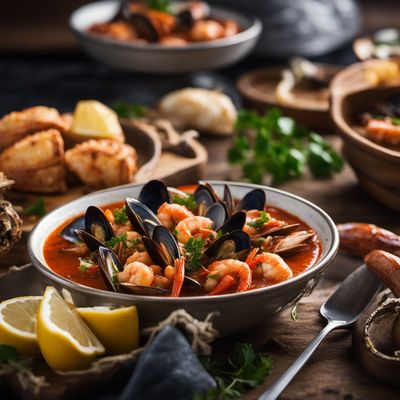
Cioppino
Cioppino is a seafood stew that originated in San Francisco in the late 1800s. It is made with a variety of seafood, such as shrimp, clams, and...

Muffuletta
Muffuletta is a classic sandwich from New Orleans that is made with a round loaf of bread filled with layers of cured meats, cheese, and olive...
